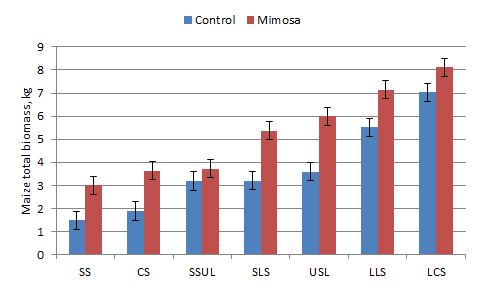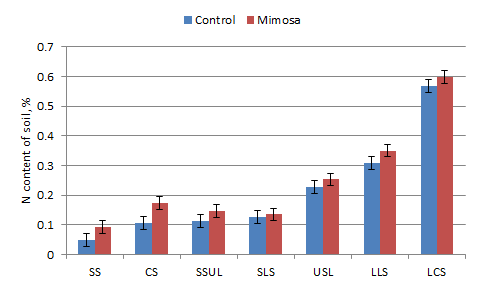 |
 |
| Figure 1. Relative growth of maize according to type of soil planted or not with Mimosa pigra | Figure 2. Relative N content of soil according to type of soil planted or not with Mimosa pigra |
|
Livestock-Based Farming Systems, Renewable Resources and the Environment |
A study was conducted on seven types of soil planted with mimosa to define the degree of soil improvement according to a 7*2 factorial arrangement with four replications. Maize was chosen as bio-test indicator plant for measuring fertility of the soils. The factors were: soils growing mimosa or not growing mimosa (control) and types of soil: sand, clay soil, loam mixed with compost 1:1, loam with leaves and compost, sandy loam, sub-soil under loam and sub-soil under sandy loam. Soil fertility, as measured by growth of maize and soil N content, was increased in soils in which Mimosa pigra had been grown (Figures 1 and 2)).
| 1. Sand (negative control) (SS) | |
| 2. Clay soil (CS) | |
| 3. Sub-soil under loam (SSUL) | |
| 4. Sandy loam (SLS) | |
| 5. Sub-soil under sandy loam (sub-soil taken at more than 20 cm. depth) (USL) | |
| 6. Loam with leaves from the shade under the trees (LLS) | |
| 7 | Loam mixed with compost 1:1 (LCS) |
 |
 |
| Figure 1. Relative growth of maize according to type of soil planted or not with Mimosa pigra | Figure 2. Relative N content of soil according to type of soil planted or not with Mimosa pigra |